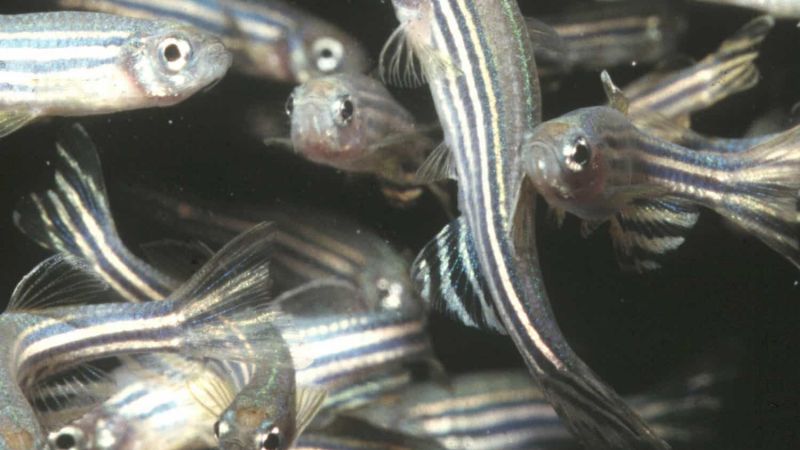Bony research: how zebrafish are helping osteoarthritis research
Osteoarthritis is the most common form of arthritis, affecting millions of people worldwide. It occurs when the protective cartilage that cushions the ends of your bones wears down over time. Eventually, the cartilage wears down completely, so that bone ends up rubbing on bone. Osteoarthritis is a degenerative disease that worsens over time, often resulting in chronic pain sometimes severe enough to make daily tasks difficult. Osteoarthritis symptoms can usually be managed, although the damage to joints can't be reversed.
Chrissy Hammond, a Versus Arthritis Senior Research Fellow at the School of Physiology, Pharmacology and Neuroscience in the University of Bristol, is interested in the relationship between genetic causes of osteoarthritis and mechanical loading - and whether or not there is an interaction between those elements.
Her work involves the zebrafish model. “My research is actually pretty intimately linked to the zebrafish model we use. They are easily genetically amenable and there are a bunch of advantages in using these fish as models.” It is possible to introduce into the zebrafish, genetic mutations associated with osteoarthritis in humans, but also introduce fluorescent reporters to label cells of interest. “We have generated quite a lot of zebrafish lines where you can see the cells in the living animal. Indeed, zebrafish are translucent so it is possible to visualise what the cells are dong while the fish are alive, without having to euthanize them. The fish are just anesthetized,” she adds.
A lot of osteoarthritis models, try to replicate injury induced osteoarthritis, osteoarthritis usually developed after a sport injury. “But we are interested in looking at naturally occurring osteoarthritis, partly caused by genetic factors that are spread in the human population,” Chrissy Hammond explains.
One of her main hypothesis is that actually quite a bit of osteoarthritis comes from a genetically linked abnormally shaped joint that may have formed quite early on. Most of Chrissy Hammond’s work focusses on very early stages of development, when those malformations appear, looking at the developing skeleton and what is happening to the joint. Almost 95% of the work is done in zebrafish larvae, younger than 5 days old. “We learn a surprising amount by looking at very early stages,” she adds. The team mostly studies the earliest joint that develops in the fish – the jaw joint. It forms from about 2,5 days old and is mobile after the 3rd day.
“If we do allow larvae to carry out these mutations and grow up, they do get something that looks very much like the human disease,” explains Chrissy Hammond. “They eventually lose cartilage, their bones thicken and their joints become less mobile. But one of the advantages of using zebrafish, is that unlike mammalian models, for example, they don’t have to support and put weight on an abnormally shaped joint because they are supported by the water that they are in. As far as we can tell, they suffer less because of that.”
As it turns out, quite a number of the human mutations associated to osteoarthritis were also associated to osteoarthritis in fish by altering early joint shape. That in turn changed the way the joint felt mechanical strains. Using computational modelling to look at how different regions of the skeleton feel strain, Chrissy Hammond found that quite a lot of the osteoarthritis that occurs naturally, happens because of this abnormal joint shape that develops very early in life. Patients with different genetic backgrounds could be developing different types of osteoarthritis according to their genetic makeup. Understanding which of these types is causing the patient pain, could help find more targeted efficient treatment. “There have been a lot of clinical trials and nothing has really succeeded. We suspect that a lot of potential treatments could work but only for specific genetic combinations. By learning more about the genetic causes of the disease, we hope to enhance the effect of current therapeutic though future genetic screening of patients,” concludes Chrissy Hammond.
Last edited: 3 March 2022 15:14



